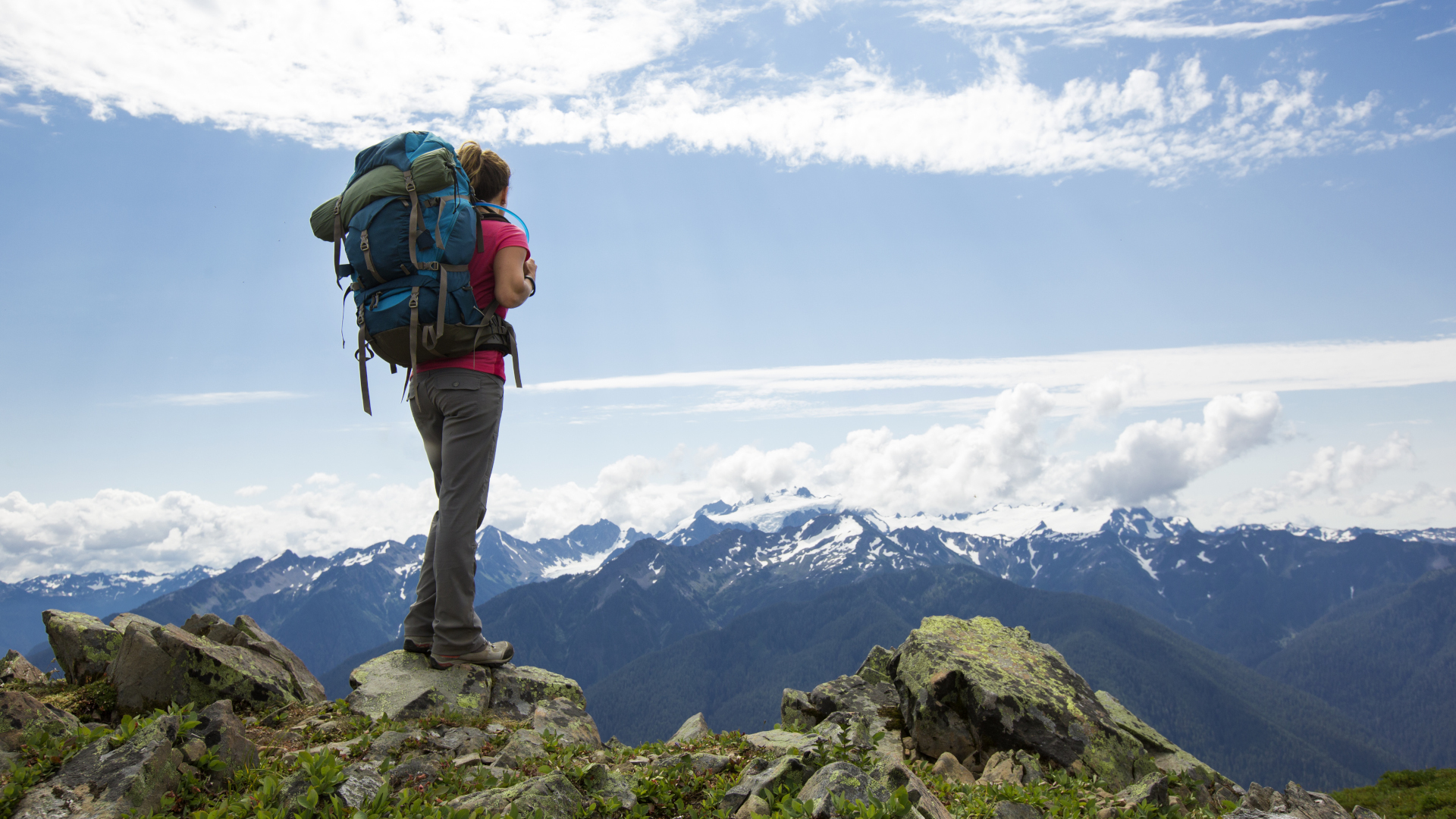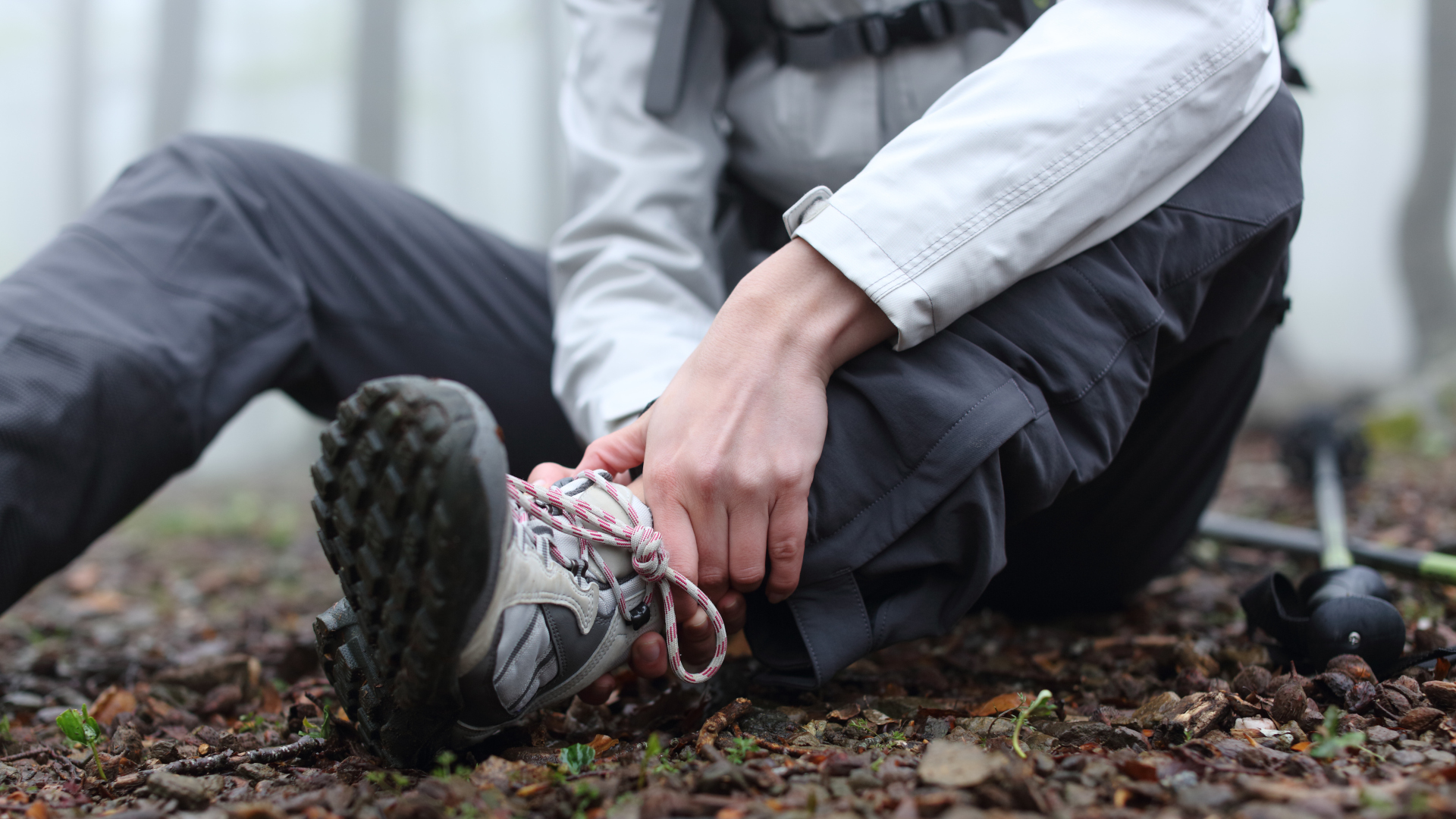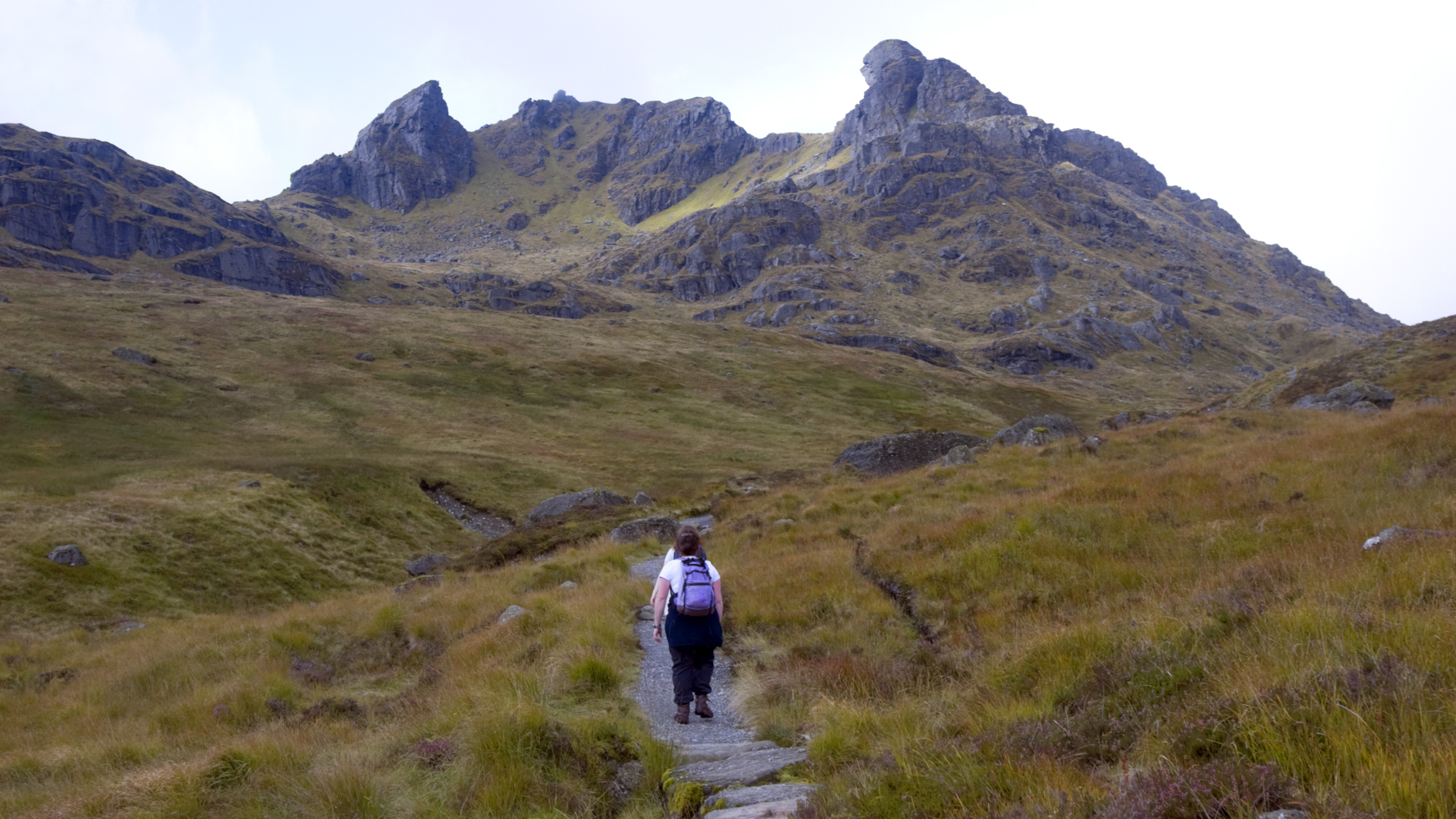Hiking alone: risks, benefits and top tips
We shed some light on the risks and benefits of hiking alone and share our top tips for increasing your safety as a solo hiker on the trail

Hiking alone is one of those gray areas in the outdoor world – an activity that we all caution against, but most of us do all the time.
“You don’t want to end up like Aron Ralston,” we say to each other gravely, referring to the climber who famously spent five days alone in a Utah slot canyon with his hand jammed between a rock and the canyon wall, wishing he’d invited a buddy or even told someone where he was going.
It’s true that there are loads of disaster stories such as Ralston’s, often with more disastrous endings than his, but there are far more stories of people heading out their front door, hiking alone and coming home safely. People do it every day, and with the popularity of hiking rising, it’s only going to happen more.
There are lots of reasons you might want to pull on your best hiking boots and hit the trail unchaperoned, from personal preference to busy schedules not lining up, but is it actually as dangerous as the outdoors community makes out? We take a look at the risks and benefits of hiking alone in this article, as well as what you can do to increase your safety as a solo hiker on the trail.

Hiking alone: what are the risks?
In all honesty, the risks of hiking alone are the same as when you're hiking with friends. You could get lost, you could sprain your ankle, you could be attacked by a malnourished mountain lion, you could be swept away by an avalanche. The main difference, of course, is that you don’t have any backup to call for help. As Ralston lamented many times in his hiking book Between a Rock and a Hard Place, having someone with him probably wouldn’t have stopped him getting his hand jammed, but it might have got him rescued.
Of course, there’s a bit of an illusion of safety when there are two of you; an avalanche could still sweep both of you away as happened in January 2022 when a Colorado couple and their dog were killed by an avalanche while snowshoeing on Hoosier Pass. But if there is someone else with you, there is at least a chance that they’ll be able to help you if you get into trouble, whether that means calling for help or lending you a shoulder so you can limp out.

When it comes to wildlife safety, the chances are always supremely high that any animal would rather give you a wide berth than have any kind of confrontation with you. The general speculation is that if, say, a mountain lion were to feel in a stalkery-type mood, it would be more likely to pursue a solo hiker than a group, but again, there isn’t really a ton of evidence to back that up. In fact, of the two mountain lion fatalities that occurred in North America between 2008 and 2018, one was a solo female hiker and the other was a man biking with a friend. Grizzly bears also haven't proven to be too picky when it comes to choosing between eating a person traveling alone or in a group. However, when you’re walking with friends, you’re usually chatting and making more noise which alerts wildlife to your presence and decreases the chances of startling a bear with its snout in a blackberry bush.
All the latest inspiration, tips and guides to help you plan your next Advnture!
So that really just leaves the risks posed by other humans. Though it’s very, very rare, we can’t tell you that hikers are never harmed by other people on trails. It does happen and while it’s difficult to find any comprehensive data on the matter, you’re probably at much greater risk from other humans virtually anywhere else but the trail. However, as with anywhere else, you may be more of an obvious target if you’re alone. But again, that’s not always shown to be the case – of the 13 murders that have occurred on the Appalachian Trail, nearly half of the victims were attacked when in the company of others.

Hiking alone: what are the benefits?
The risks of hiking alone may not be as high as you previously thought, but they are real. So are there any clear benefits to hiking alone?
Well, an obvious upside to hiking alone is that you can go entirely at your own pace. This may not matter to you at all, of course, but if you’re a slow hiker and you often struggle to keep up with others, you can walk at a pace where you can actually breathe and enjoy yourself. On the other end of the spectrum, if you’re a fast hiker who gets annoyed at having to stop and wait for others, you can trot off up the trail and wait for no one.
Of course, accommodating others doesn’t just mean stopping frequently on the trail. When you hike with others, you may find yourself waiting for them to be available, negotiating which hike to do, or hanging around at a meeting point. Hike alone and you’re basically free to go wherever you want, whenever you want, and have exactly what you want for lunch.
Finally, another benefit of hiking alone is the exceptional quiet time. We all head out into the wild to immerse ourselves in nature and clear our heads, but sometimes you end up listening to your friend complaining about their partner the entire way which doesn’t quite lend itself to the meditative experience you were seeking. If you have kids or you’re just around people a lot, hiking for you might very much be about that precious alone time. Walking helps us think and doing it alone when you’re not in conversation can really help to reduce stress, solve problems and come up with new ideas.

Hiking alone: staying safe
If you’re dead set on hiking alone, these are a few things that you can and should do to improve your safety:
- Research your hike: the most important thing you can do for your safety is to research the trail and make sure you’re prepared in terms of gear and fitness. Of course, this goes for hiking in groups too, but again, there’s no one to help bail you out if you get in over your head.
- Know navigation: people often cite getting lost as a reason not to hike alone, but if you’re paying more attention to what you’re doing because you’re not chatting, the chances of straying are probably lower. That said, you absolutely need to have your navigation skills dialed in, know how to read a map and carry a compass.
- Stick to popular trails: if you stick to desirable hiking trails, you’ll never really be alone on the trail for very long. You’ll be able to tell by how many cars there are at the trailhead if it’s busy, and if it’s deserted and feels creepy, find another trail.
- Tell someone where you're going: no matter how much you love the alone time of hiking, you should always tell someone reliable where you are going and when you plan to be back, so that they can raise the alarm in a timely manner if you don’t return.
- Take your phone: yes, you probably want to get as far away from your screen as possible, but having your phone charged and on your person could save your life. From calling mountain rescue to being able to provide your GPS coordinates, you’ll be glad to have it in an emergency – just turn your ringer off while you’re walking.
- Carry pepper spray: if it’s legal where you are, you can arm yourself with pepper spray in an easy-to-reach pocket in case someone does attack you. You probably won’t need it, but it might help your confidence. Of course, if you’re in bear country your bear spray will suffice.
- Don’t wear headphones: staying alert and aware of your surroundings is key for personal safety anywhere; don’t make the mistake of wearing headphones while you’re hiking.
- Make noise: most wildlife will move away if they hear you coming, so it pays not to tiptoe down the trail. Definitely don’t be one of those obnoxious hikers blasting Katy Perry on the trail, but do make noise – if you feel a little freaked out you can talk to yourself, bang your trekking poles together or give your whistle a quick blast.
- Learn mountain safety: particularly if you're adventuring up big hills, you'll want to get some basic training in avalanche safety, first aid and know how to use a bothy bag.
- Hiking first aid kit: why you need one for everyday adventures
Julia Clarke is a staff writer for Advnture.com and the author of the book Restorative Yoga for Beginners. She loves to explore mountains on foot, bike, skis and belay and then recover on the the yoga mat. Julia graduated with a degree in journalism in 2004 and spent eight years working as a radio presenter in Kansas City, Vermont, Boston and New York City before discovering the joys of the Rocky Mountains. She then detoured west to Colorado and enjoyed 11 years teaching yoga in Vail before returning to her hometown of Glasgow, Scotland in 2020 to focus on family and writing.

